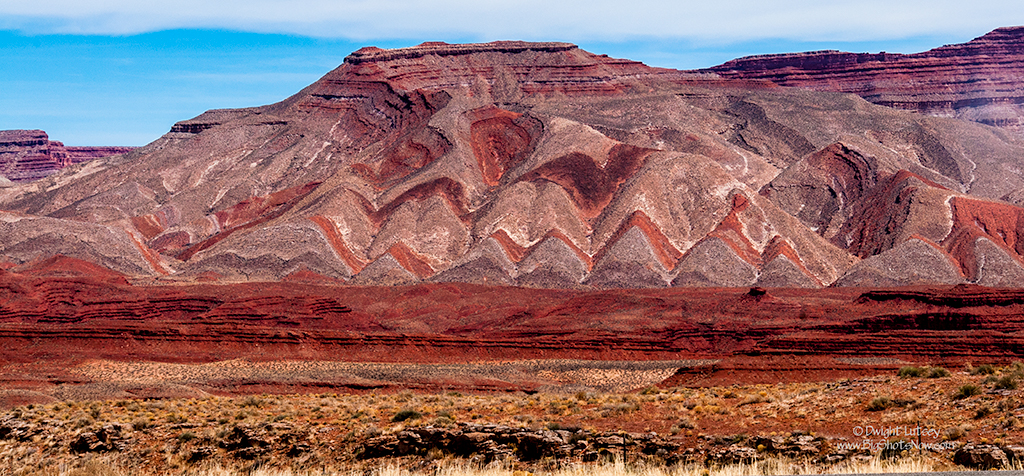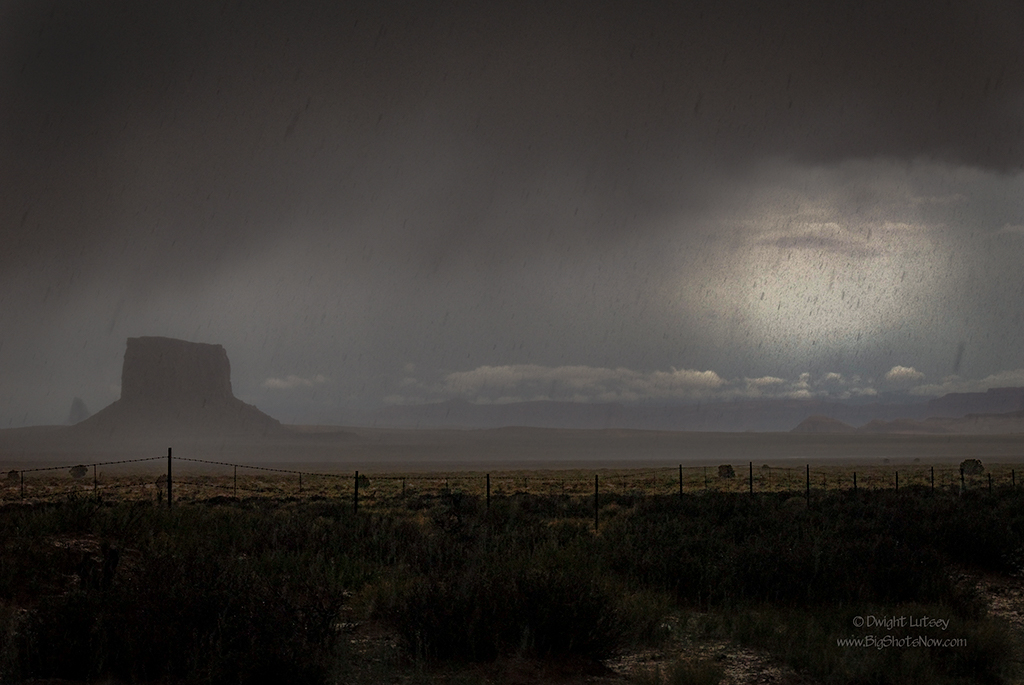
Just North of Mexican Hat, Utah as you travel Hwy163 to where it joins with Hwy 261 the San Juan river makes a mighty bend in its generally East to West flow. It flows past the town of Bluff on the East and makes it way in a serpentine fashion westward where it meets the Colorado river and finally dumps into Lake Powell.
The junction of the two highways is just a place in the road where you decide if you want to turn left on Hwy 261 and head on up to Moki Dugway and Muley Point or stay on 163 until you finally get back to Bluff. Lots of times as you’re traveling from one incredibly scenic spot to another you get into traveling mode. As there may be 100 or so miles between places you want to see you put yourself in autopilot and head down the road at the most prudent speed you can tolerate and watch the mile markers tick off the miles. After all you can’t be late for something spectacular.
The roadside scenery, as incredible as it is, becomes a blurred streak outside your windows and it isn’t until you check back in to reality and find that you have to stop to make a decision about which route you need to take or let the dog out to take a whiz, that you begin to notice your surroundings again.
That’s when you realize that everywhere you look is an unexpected view. If these particular hills have a name, we’ve unofficially named them the Zig-Zag mountains, it’s not on a sign anywhere. We looked. That doesn’t lessen their scenic quality one little bit. What it does though is make you want to retrace your path to see what else you missed while you were speeding along getting to some place else where there might be scenery. That’s the one huge problem in traveling through the Southwest, there are unexpected views all over the place. Next trip will be to see all the unexpected places instead of racing to see the expected ones.


You must be logged in to post a comment.